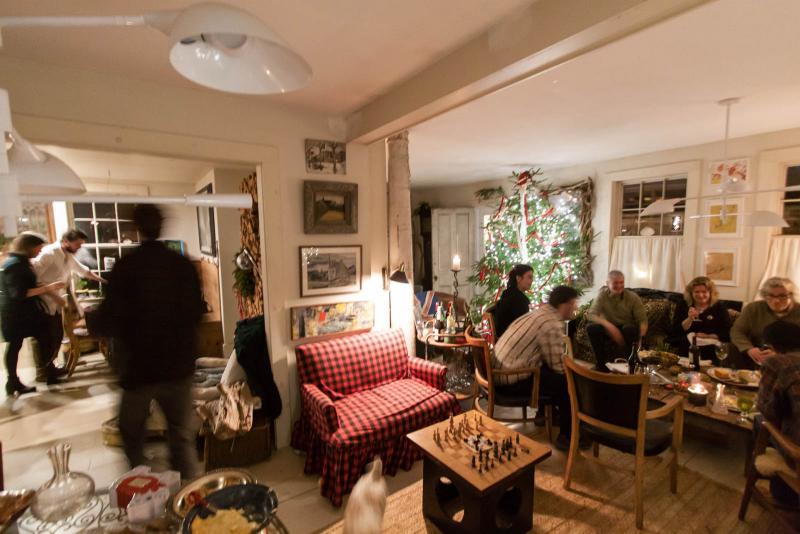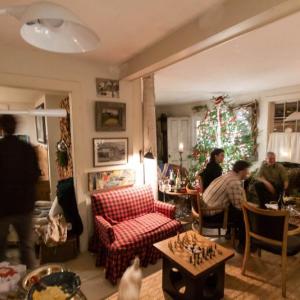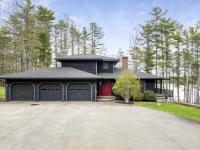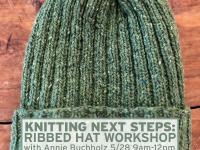Old Houses: A design builder's energy efficiency primer
 An open floor plan is energy efficient and fun. (Photo courtesy Tom Young)
An open floor plan is energy efficient and fun. (Photo courtesy Tom Young)
 100 percent seal storm window saves money and is quieter. (Photo courtesy Tom Young)
100 percent seal storm window saves money and is quieter. (Photo courtesy Tom Young)
 A pellet stove and a heat pump go hand-in-hand. (Photo courtesy Tom Young)
A pellet stove and a heat pump go hand-in-hand. (Photo courtesy Tom Young)
 A remote electric heater with a timer... a brilliant idea. (Photo courtesy Tom Young)
A remote electric heater with a timer... a brilliant idea. (Photo courtesy Tom Young)
 Direct heat versus central heat: Stay warmer while using less energy. (Photo courtesy Tom Young)
Direct heat versus central heat: Stay warmer while using less energy. (Photo courtesy Tom Young)
 Old house can be energy efficient. (Photo courtesy Tom Young)
Old house can be energy efficient. (Photo courtesy Tom Young)
 An open floor plan is energy efficient and fun. (Photo courtesy Tom Young)
An open floor plan is energy efficient and fun. (Photo courtesy Tom Young)
 100 percent seal storm window saves money and is quieter. (Photo courtesy Tom Young)
100 percent seal storm window saves money and is quieter. (Photo courtesy Tom Young)
 A pellet stove and a heat pump go hand-in-hand. (Photo courtesy Tom Young)
A pellet stove and a heat pump go hand-in-hand. (Photo courtesy Tom Young)
 A remote electric heater with a timer... a brilliant idea. (Photo courtesy Tom Young)
A remote electric heater with a timer... a brilliant idea. (Photo courtesy Tom Young)
 Direct heat versus central heat: Stay warmer while using less energy. (Photo courtesy Tom Young)
Direct heat versus central heat: Stay warmer while using less energy. (Photo courtesy Tom Young)
 Old house can be energy efficient. (Photo courtesy Tom Young)
Old house can be energy efficient. (Photo courtesy Tom Young)
We love old houses but is a warm, energy efficient, old home... possible? Having spent years building new houses and restoring old ones, here are some ideas that work.
1: Space Design
Many old houses are a labyrinth of small rooms. Central heating, usually located in a basement, delivers energy via a lengthy conduit of pipes or ducts to isolated areas around the house. That's a big task made even bigger by the loses of the lengthy distribution system.
Solution: Tear down some walls. An open floor plan allows a well located direct source of heat, to effectively keep us warm in the spaces where we spend most of our waking hours.
Direct source heaters include; wood stoves, pellet stoves, direct vent -LP-K1-fuel oil space heaters and the growing field of ASHP's(Air Source Heat Pumps). In an open floor plan these smaller heaters will heat one large space with no distribution losses and consume less energy than central heat.
Remote areas like bathrooms and bedrooms(generally cooler), may still be heated by the houses remote central heating system or their own smaller direct source heaters.
2: STOP air Infiltration
First, doors and windows. If you're lucky enough to have an old house with it's original windows, keep them. They can save you money. Old doors and windows with well designed storm doors and storm windows can be made as efficient as most new windows and doors. Old windows require annual maintenance, but can last for centuries, not just a few decades.
Next, STOP air infiltration with a whole house envelope. Here's a few envelopes to consider: From the inside — with walls, ceilings and even subfloors exposed — install a continuous plastic vapor barrier. Wrap the house up, down over floors, up over ceilings. Keep all seams well sealed.
An envelope of insulating foam board around the interior(beneath the finish surface), can be a very effective envelope while adding insulation value.
Proper installation of wallboard, designed so that it is sealed(caulked) to the subfloor, can be an effective air sealing envelope.
Treat the exposed exterior basement walls from the inside(or out) with an envelope(sheet plastic, foam sheet or sprayed). Limit any envelope penetrations like electrical outlets in outside walls(move them to interior partitions when possible).
Exterior envelope: Caulk door and window trim, clapboards, all joints when you're painting. The more envelopes(air barriers) you create, the better.
Insulation: Insulation options abound. Spun fiberglass insulation works but needs an air barrier(inside and out), to be effective. Sprayed urethane foam, a more effective insulation material, is also an air barrier.
Old houses and their users all vary, widely. Here are a few energy efficiency modifications we've made to the 1850s home my family lives in.
Space Design: We removed nearly all first floor interior walls(except structural). This allowed our kitchen, dining and living area to be heated by a wood pellet stove. A redesigned stairway in a large open air channel provides passive interior air circulation to the second and third floors.
STOP air infiltration: Achieved with custom(very simple) storm windows over refurbished 150 year old windows and well weather stripped traditional storm doors over old entrance doors.
An interior envelope and added insulation of 1/2" aluminum faced foam board was meticulously installed and taped over open stud walls and exterior ceilings. A layer of 3/4" foam board was installed(between sleepers) between the first floor and (unheated) basement. A continuous vapor barrier layer(sheet plastic) with carefully overlapped seams was installed over the foam board floors, walls and ceilings.
Insulation: Standard fiberglass wall-rafter cavity insulation was installed. Today I prefer the sprayed foam which is readily available even for the do-it-yourself. It is well worth the extra cost.
Our energy efficiency results: With reasonable energy conservation, our family of four have lived comfortably in 2,200 square feet of refurbished old house for more than 10 years. Our combined energy costs today (heat, electric, hot water, cooking) are below $1 per square foot.
We love our warm, energy efficient, old house.
Tom Young, a design builder in Rockport, can be reached at tomyoungdesign@gmail.com
Event Date
Address
United States


































